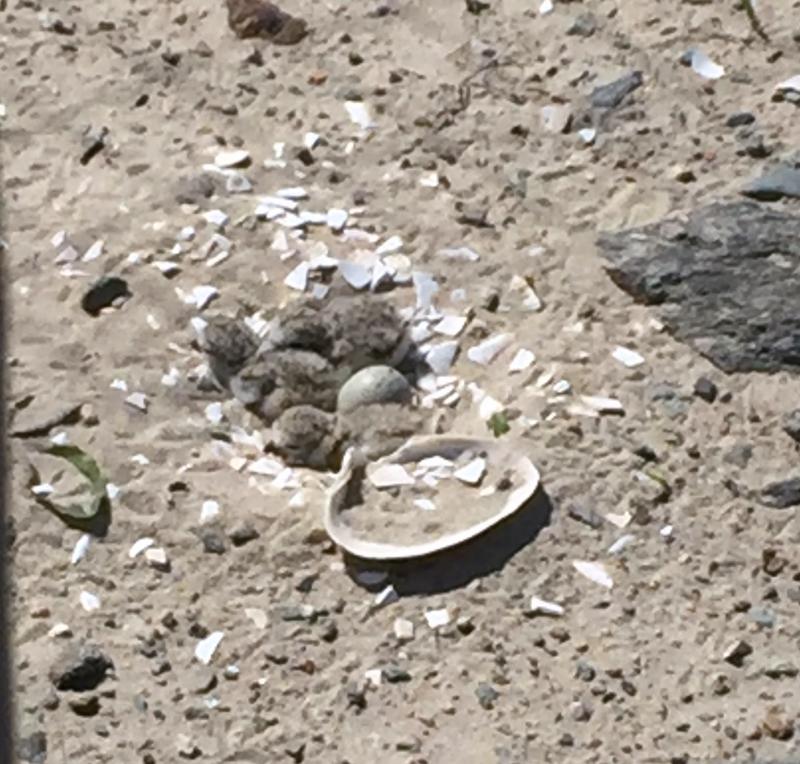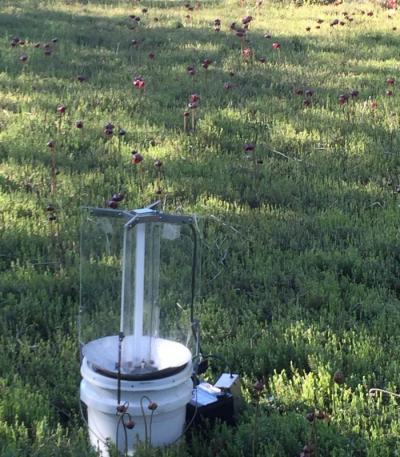Lloyd Center 2019 Beach Research Season Underway by Lloyd Center Research Associate Jamie Bogart
The Lloyd Center for the Environment's Research Department kicked off its 2019 campaign by embarking on its 33rd season of Piping Plover Conservation, a cornerstone project in place since 1986 when the shorebird was first declared endangered due to habitat loss and increased human presence on beaches. After a season of great change as site responsibilities switched hands, the Center returns in 2019 to privately-owned Bakers Beach in Westport, and West Island Town Beach in Fairhaven - two contracted sites last year. Both enjoyed stellar seasons as unique challenges were overcome and productivity results were high.
At Bakers Beach, the two pairs of the previous year returned to their habitats, including the dune “bowl” adjacent to the beach, and the famed parking lot where a pair nests successfully each year. On June 7, the lot nest successfully hatched four chicks. Although the brood has only two chicks left, due likely to either crow or coyote predation, fledging any chicks at all from this brood is an accomplishment, considering the uniqueness of the pair and situation. We always hope for full fledge success, but losing broods where predator stress is high is commonplace.
Given that this pair readily accepts exclosures and was successful last year, the decision to exclose was easy. For the dune pair, there was more risk given past trends for the pair and high chance that less tolerant pairs will abandon nests. Because the nest was predated last year and predator presence remains high, we chose to exclose. While the pair calmly incubated initially, on June 12 the nest was unfortunately abandoned due to coyote circling the cage. With the pair hanging around last season but never re-nesting, we hope the dune pair lays another clutch for a second try.
At West Island, the questions following record abundance and productivity was, “will a larger population return to nest, and with the town beaches at or near carrying capacity,” and relatively small nesting areas on the Department of Conservation and Recreation (DCR) portion, “where will the birds go?” A whopping 12 pairs have nested, shattering last year’s record eight pairs.
While last season all but one pair nested on the town beach, an even mix of six pairs each on town and DCR property have nested, including an unprecedented four pairs north of the channel on the DCR side. A pair has also finally nested on the west shore of the island, close to the lot on the town beach. As the initial sole site cooperator, Lloyd Center staff secured the nesting pairs on the DCR portion, before DCR staff joined the fray to monitor their pairs in what has become a collaborative effort. This is the first time two organizations (Lloyd Center, DCR) from two separate contracts (Town of Fairhaven, DCR) have staff in the field on the island. This depicts how important the site has become for plovers in Buzzards Bay, with new management complexities taking shape as the plover population continues to increase at this site.
With more birds comes more predators, and predation is thus far slightly higher than last season. Three nests have been predated as of this writing, (two town, one state/DCR), and one set of hatchlings vanished immediately upon hatching. The good news is three other town pairs have broods going strong, a DCR brood just hatched from the campsite area, and all pairs have re-nested.
A new project associated with the beach this season is an inventory of insect “dune affiliate” species that utilize dune vegetation for habitat and includes rare, and perhaps, listed species. Specific efforts include light trapping for moths, a familiar Lloyd Center research endeavor, and setting up pitfall traps to sample the beetle population. This includes tiger beetle surveys on the Westport Town Beach itself, where perhaps the Northeastern Beach Tiger Beetle, long believed extirpated from the site, will reappear. Sites where moth and/or beetle sampling are occurring in dune areas include Horseneck Beach, Bakers Beach, and Westport Town Beach.
Stay tuned for further updates on these exciting research efforts!















